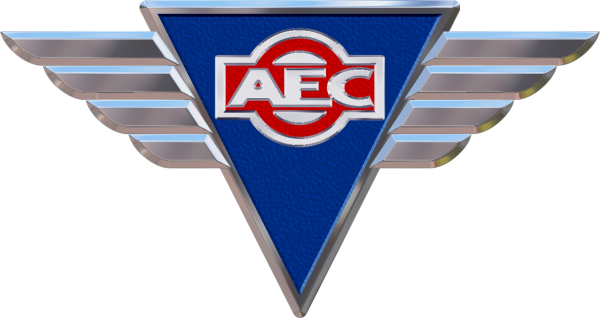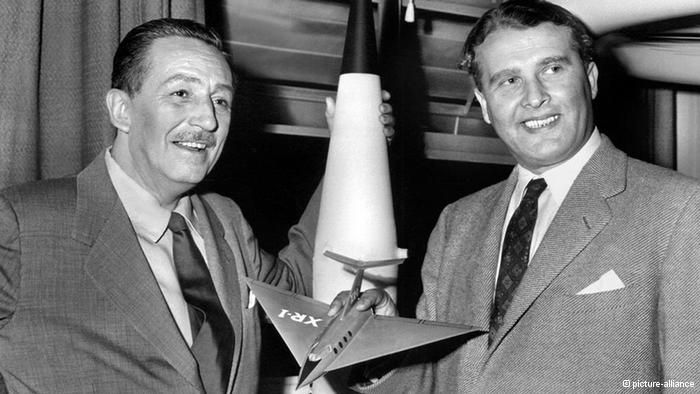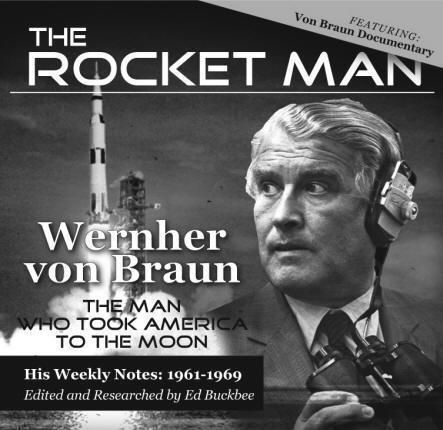Fredm:
VALKYRIE:
Carryfast:
[ZB]
Anorak:
Ramone:
ive just read this again and cant understand what was to consider about fitting the high datum cab ,if it helped the cooling it was a no brainer but would more AECs have been sold then ,which apparently Leyland didn`t want.Also AEC engine production transfered to Leyland and AEC producing and developing the already known to be useless, fixed head 500s .I think this report spells out what Leyland were all about
I think Leyland’s strategy is sound. The AEC engines had been in production for some time, whereas the 500 series was a new design, so they would have been looking to produce it for another 20 or 30 years, in various forms. The continuation of the AEC models would have been just to satisfy that marque’s loyal customers, during which period they could be “weaned” onto Leyland products. There was no point in spending any money updating the AEC models- the sooner the group was building a single range of vehicles, with a single parts inventory, marketing campaign and other overheads, the better. They were not to know that the 500 would eventually become a lemon.
The sad fact is AEC was in the catch 22 situation of having an engine range that had run out of development potential and no budget to move forward at the required rate,just like the rest of the Leyland Group,compared to the foreign competition it was facing .Hence the TL12’s failure in the T45.But it wouldn’t have taken a genius to have known that the 500 wasn’t fit for the purpose of it’s documented design aims.Simply because it was too small in capacity to have met the criterea of a single engine range to suit all levels of the market regardless of all it’s other production ‘issues’.AEC’s management would have known that the writing was on the wall at that point if not before.Just as Scammell had already shown and later with the T45 Leyland’s only hope was to abandon dvelopment and use of it’s in house engine production at the very least to even stand a chance of remaining competitive in the fast moving truck market.
Best Ergomatic Cabbed-Lorry Model? PART 12.Page 20.TRUCKNETUK.1st May - MAYDAY 
LEYLAND:UNITED WE STAND DIVIDED WE FALL  - BUT LEYLAND BECAME DIS-UNITED AND FELL!
- BUT LEYLAND BECAME DIS-UNITED AND FELL! 

The objective facts were that Leyland’s policy was not sound:It was ludicrous,callous,
commercially disasterous,arrogant,criminal and woefully wrong!  It was also tragi-comical!
It was also tragi-comical! 
Leyland built a very successful motor empire,and then through,politicians,mis-management
and other circumstances,the Leyland empire was destroyed! 
Because of the following lorry,bus and motorcoach marques within the Leyland empire:-
AEC.
ALBION,
ALVIS.
AVELING-BARFORD.
BMC.
BRISTOL.
DAIMLER.
GUY.
LEYLAND.
SCAMMELL.
THORNYCROFT.
,plus vans and off road motor vehicles made by:-
AUSTIN.
AUSTIN-MORRIS.
MORRIS.
LAND-ROVER.
RANGE ROVER.
,British Leyland were the market leaders in the British commercial vehicle market,and also in
certain markets abroad.But the Leyland group’s very large shares in these markets gradually
vanished,partly because of the phasing out of Leyland marques and models!!! 


Leyland was united because of all of the marques,and became dis-united as the marques were criminally dropped!!! 

 - not surprisingly Leyland’s market share dramatically dropped too!!!
- not surprisingly Leyland’s market share dramatically dropped too!!! 


A E C
Lord Donald Stokes was impressed by the marque loyalty of AEC customers,of how thousands of them
placed orders for new AEC lorries,motorcoaches,buses,etc,year after year,decade after decade,and
in fact AEC out-sold Leyland and other marques in certain sectors of the market 
When the HIGHLY REVERED AEC Marque was criminally dropped  ,first from lorries,then from motorcoaches and buses,very many AEC customers both at home and abroad were upset
,first from lorries,then from motorcoaches and buses,very many AEC customers both at home and abroad were upset  and went right
and went right
off Leyland  and it’s motor vehicles
and it’s motor vehicles  and,partly out of protest,bought Scanias,Volvos,Fodens,
and,partly out of protest,bought Scanias,Volvos,Fodens,
Mercedes-Benzs,etc,instead!!! 







 -And it served Leyland mis-management right in every way!!!
-And it served Leyland mis-management right in every way!!! 





With AEC gradually phased out,Leyland suffered a big drop in market share  It was a terriable marketing disaster!
It was a terriable marketing disaster! 

And so was the phasing out of other Leyland marques! 
Other objective facts were that the AEC AV/AH 760 engine was new in 1964,and still had development potential left in it in the late 1970s-early 1980s at least,hence the successful
TL12-derived engine that was fitted in the Leyland-AEC Marathon and Leyland Roadtrain.
Leyland never sold enough TL12- engined Roadtrains,so it was phased out in 1982,even though
the Roadtrain-TL12 set new economy and earning records in 1981 
As Ramone wisely said:Overall,it was a case of Leyland giving the customers what it wanted to give  ,AND NOT WHAT THE CUSTOMERS REALLY WANTED
,AND NOT WHAT THE CUSTOMERS REALLY WANTED  :AECs,Scammells,Guys,etc
:AECs,Scammells,Guys,etc  .Leyland fatally lost touch with reality
.Leyland fatally lost touch with reality  What Leyland mis-management did to British Leyland’s part of the British Commercial Vehicle Industry was CRIMINAL!
What Leyland mis-management did to British Leyland’s part of the British Commercial Vehicle Industry was CRIMINAL! 
I’ll let the illustrious AEC marque have the last say in the form of it’s beautiful and highly revered blue,red ,white and silver triangle badge 





 :-
:-

VALKYRIE
just a little aside from me I dont post much but enjoy these discussions very much talking about buses god preserverse us from such sacriledge I know you do not want to hear about buses, however I drove buses for london transport for a few years in the 80s when I left I went lorry driving again but after a few months had the usual fall out with the boss (I was always a bit of a hot head when I was young) I jacked the job and to keep wages coming in I went to work for grey green coaches who had a contract for a couple of routes I had driven before this was when a lot of bus routes had been put out to private tender, I was only there for 3 weeks but did the 173 stratford to dagenham route down the a13 now on early shifts they had rubbish old leyland buses worn out and old but after 6 pm they put out new scania buses which would easily do 60 - 70 mph which was as well as the running time was very tight on the later duties, sorry to bore all you lorry boys but my point is I had driven new leyland titan buses on LT although governed to 47 mph they were not a patch on the scannies the scanias were light years ahead they had an auto box with no discernable steps in the changes, they were just like driving a car around , to me british trucks were the same as the motorbike industry who never seemed to change with the times the japs pulled the rug from under their feet , look at the maraton even the range button stuck on the gearstick looked like an after thought with the cable taped down the length of the g/stick the foreigners had a range change button in a moulded shape. its a crying shame because look at us now if you don`t want to get a good education and work in a bank what job choice have you got if you are a young boy or girl. you can all get back to your lorry tales now. Fredm
Best Ergomatic Cabbed-Lorry Model? PART 13.Page 20.TRUCKNETUK.
MOTORCOACHES AND BUSES.
Fredm:-
If you have read some of my other posts on TRUCKNETUK I’ve got no inhibitions in writing about
motorcoaches and buses on TRUCKNETUK  ,since I am a Motor Vehicle Enthusiast of motor vehicles of
,since I am a Motor Vehicle Enthusiast of motor vehicles of
all kinds and types  …besides,motorcoaches and buses have a lot in common with lorries!
…besides,motorcoaches and buses have a lot in common with lorries! 

I do understand your preferences for Scania buses and motorcoaches compared to driving
London Transport Leyland Titan TN double decker buses and Grey Green Leyland Leopard motorcoaches,etc.For one thing,the Scanias had superior power to weight ratios than the Leylands
because they had more powerful engines than the Titans and Leopards - and the early Tiger TRs -
and also AEC Reliances.It was just the same with the Volvo B10M motorcoach:It could leave AEC
Reliance and Leyland Leopard motorcoaches standing! 

MULTI MARQUE COMPANIES HAVE FAR BIGGER MARKET SHARES.
Carryfast:-
My heart has got nothing to do with it! 
 I’m just stating real,cold,hard,sensible objective
I’m just stating real,cold,hard,sensible objective
commercial facts! 
 General Motors,PACCAR,Daimler Benz,Volkswagen,etc,are all successful multi-marque motor vehicle manufacturers who have far bigger market shares now than they would if they only had one marque each!
General Motors,PACCAR,Daimler Benz,Volkswagen,etc,are all successful multi-marque motor vehicle manufacturers who have far bigger market shares now than they would if they only had one marque each!  It was the same with Leyland,but they blew it when they dropped AEC,
It was the same with Leyland,but they blew it when they dropped AEC,
Guy,Albion,etc 

 -and this was admitted by at least THREE Leyland executives in the Truck and Bus Division!
-and this was admitted by at least THREE Leyland executives in the Truck and Bus Division! 
Leyland’s calamitous and very misguided policy was,in some respects,tantamount to the German Nero Decree - Nerobefehl - Scorched Earth Policy 
 ,which eventually proved to be the
,which eventually proved to be the
Gotterdammerung of Leyland in it’s long drawn out death from 1974 to 2000! 
 How delicious
How delicious
it would be to see Leyland mis-management witness the long drawn out Gotterdammerung of Leyland! 


THE LEYLAND AEC TL12 ENGINE WAS A VERY GOOD ENGINE.
As I’ve stated in my PART No.12 in this thread, re the Leyland TL12 “was the successful
TL12-derived engine that was fitted in the Leyland-AEC Marathon and Leyland Roadtrain.
Leyland never sold enough TL12- engined Roadtrains,so it was phased out in 1982,even though
the Roadtrain-TL12 set new economy and earning records in 1981  ”
”
And all these facts are also confirmed by Pat Kennett,Saviem,Gingerfold and other people 
THE GERMANS ARE VERY CLEVER ENGINEERS.
I have always admired the Germans in regard to their engineering know-how,innovation,invention
and perfectionism,the Germans are very clever,precise and intelligent engineers  They have
They have
excelled in radio communications engineering,motor vehicle engineering,electrical engineering,
aerospace engineering,and so on  And do not forget that a great German engineer-scientist,
And do not forget that a great German engineer-scientist,
Dr.Wernher Von Braun,who is one of my HEROES  ,masterminded America’s highly successful space
,masterminded America’s highly successful space
programme,that included the Apollo men on the moon missions  He is credited as being the “Father of Rocket Science”
He is credited as being the “Father of Rocket Science” 
Thus the German engineer,Dr-Ing Alfred Mueller,was Leyland’s Head of Engineering Development
from 1953 to at least the early 1960s,who,amongst other things, played a major role in the design and introducton of the highly successful rear-engined Leyland Atlantean Double Decker Omnibus 
Dr.Wernher Magnus Maximilian, Freiherr Von Braun was a good looking and brilliant Aerospace engineer-scientist who masterminded America’s Space Programme and Moon Landings  He also obviously converted millions of Americans in to the joys of space travel and space exploration via the
He also obviously converted millions of Americans in to the joys of space travel and space exploration via the
Walt Disney Organanisation and nationwide television programmes  :Walt Disney is on the left,and
:Walt Disney is on the left,and
the great Wernher Von Braun is on the right  :-
:-

And Wernher and his very impressive,fascinating and mighty Saturn V Multistage Spaceship-Rocket used for the Apollo Moon Landings Programme:-

[ZB] Anorak:-
LEYLAND 500-SERIES FIXEDHEAD HEADLESS WONDER DIESEL ENGINE.
I too have read the following report:-
mk-marketing.eu/Publications … ionM-E.pdf
But Michael Knowles seems to be obsessed with feet,inches,fractions,meters,centimeters,milimeters,
fixings and fastenings in the British Commercial Vehicle Industry,and has had several articles
published on this overall subject,namely The Metrication of the British Commercial Vehicle Industry,
in various publications,including the HISTORIC COMMERCIAL VEHICLE SOCIETY’S Historic Commercial
Magazine.
Some of what he says in this report is wrong.For example,as I said in my PART No. 10 of this thread:-
“The Leyland Group had cylinder head gasket problems with some of it’s AEC and Leyland
engines,but,although these blown gasket problems were largely cured,it was our old friend
Dr.Albert Fogg  that came up with the idea of using a fixed cylinder head for the new engine range”.
that came up with the idea of using a fixed cylinder head for the new engine range”.
So it wasn’t Dr.Mueller’s idea.
I also said in PART 10 "At a critical stage,the decision was made to reduce the cubic capacity down to 8.2 litres -500 cid  ,one of the reasons was to get the engine’s weight down below 1000 kg.Leyland wanted to offer a better power to weight ratio - the 700-Series was too heavy.Because of this interference from Leyland management in regard to the engine capacity
,one of the reasons was to get the engine’s weight down below 1000 kg.Leyland wanted to offer a better power to weight ratio - the 700-Series was too heavy.Because of this interference from Leyland management in regard to the engine capacity  ,the development engineer walked out!!!
,the development engineer walked out!!! 



I have since found out that the engineer who walked out of Leyland was none other than Dr.Alfred
D.Fogg! 

AEC SUPER MANDATOR V8 3VTG CONCEPT-PROJECT-PROTOTYPE 6x4 TRACTIVE UNIT.
Albert Fogg’s AEC Super Mandator V8 3VTG High Tower 6x4 Tractive Unit,which looked like a Peterbilt High Tower COE,and was also in the same idiom as an Australian Atkinson High Tower COE,
was designed for better engine cooling,better driver comfort and high power for long distance
heavy duty freight trunking,and would have been for sale in British,European,Australian,New Zealand and other markets - as I said my PART 4:AEC and Albert Fogg were wisely doing a Volvo F88-F89! 

VALKYRIE




